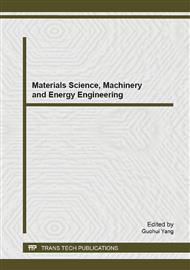p.526
p.531
p.536
p.541
p.547
p.553
p.559
p.565
p.571
Analysis of China PV Application Market Development Support Policy Based on NPV Model
Abstract:
In recent years, excessive expansion of the PV industry makes photovoltaic products in oversupply condition, coupled with anti-dumping investigation of the United States and Europe, china PV industry fall into the bankruptcy plight. In order to stimulate the development of domestic PV application market in a short time, China has introduced a number of PV support policies; however, compared with Germany in policy design, China's PV support policy system is too rough, Apart from a number of demonstration projects, PV application market is far not formed. Therefore, the PV support policies require a more detailed design. This paper aims to discuss the current related problems of china PV support policy based the NPV model, than propose countermeasures and suggestions. This paper argues that the government needs to develop NPV model-related implementation details for different types of participants. The government should attach importance to the development of small household systems (SHS).
Info:
Periodical:
Pages:
547-552
Citation:
Online since:
December 2013
Authors:
Keywords:
Price:
Сopyright:
© 2014 Trans Tech Publications Ltd. All Rights Reserved
Share:
Citation:


